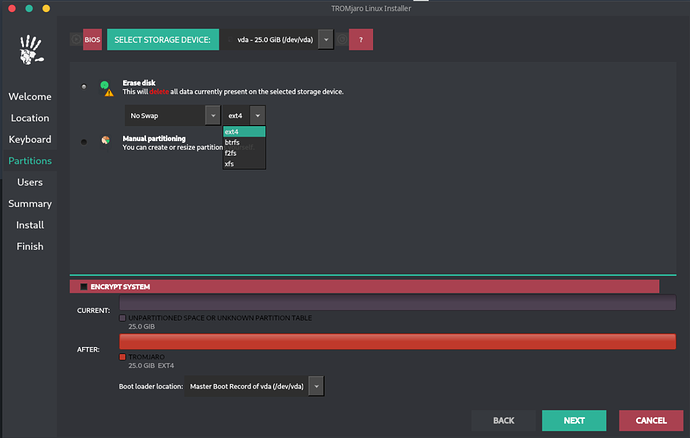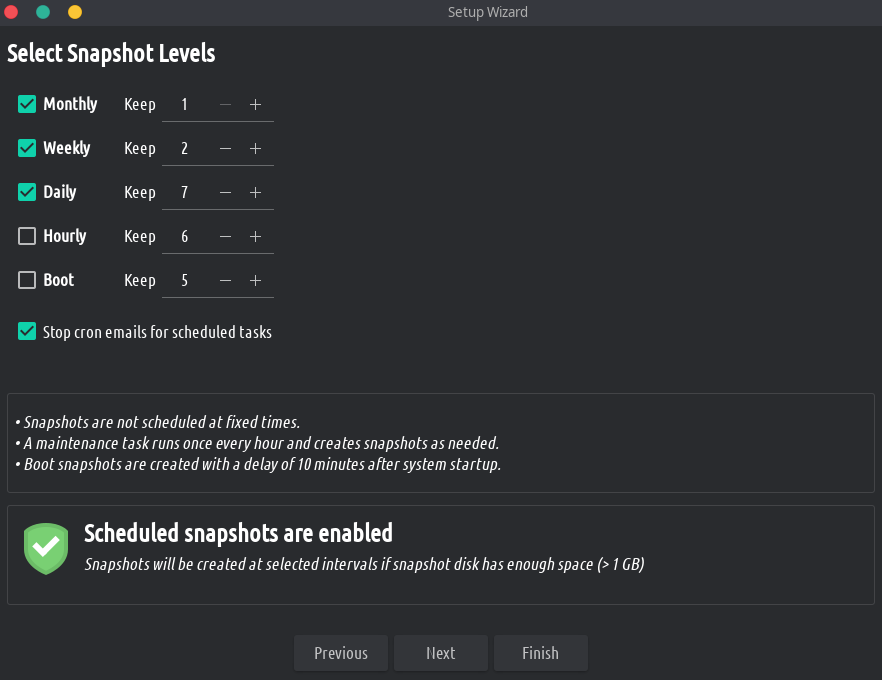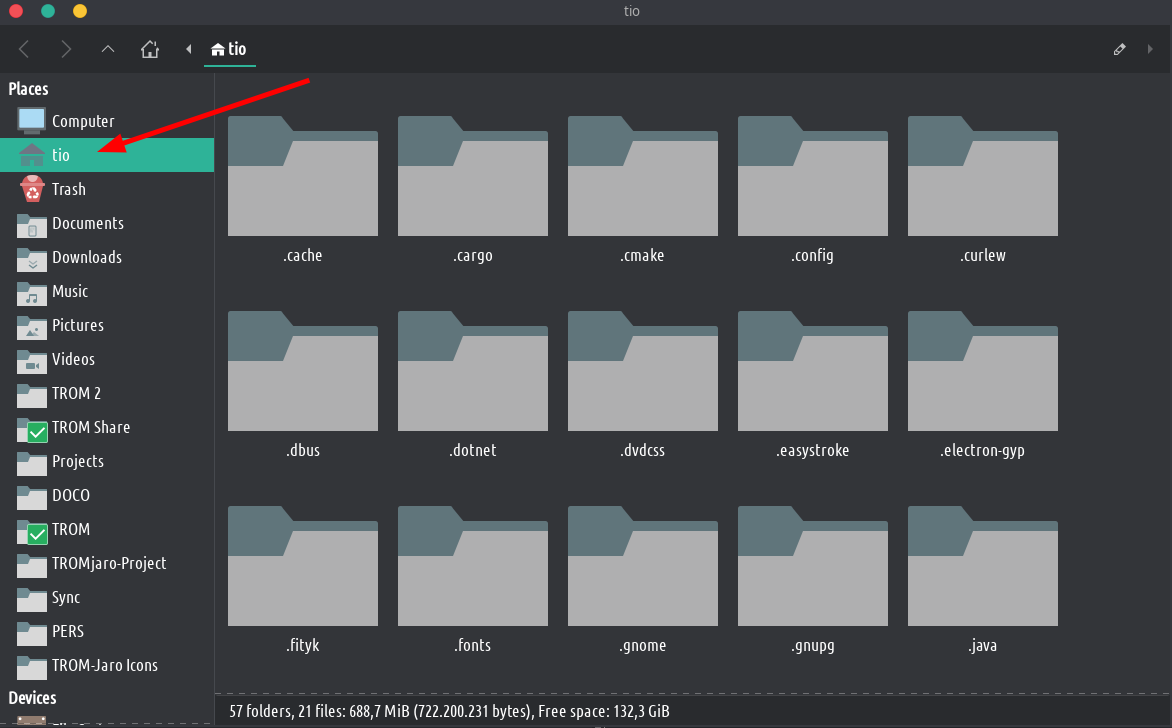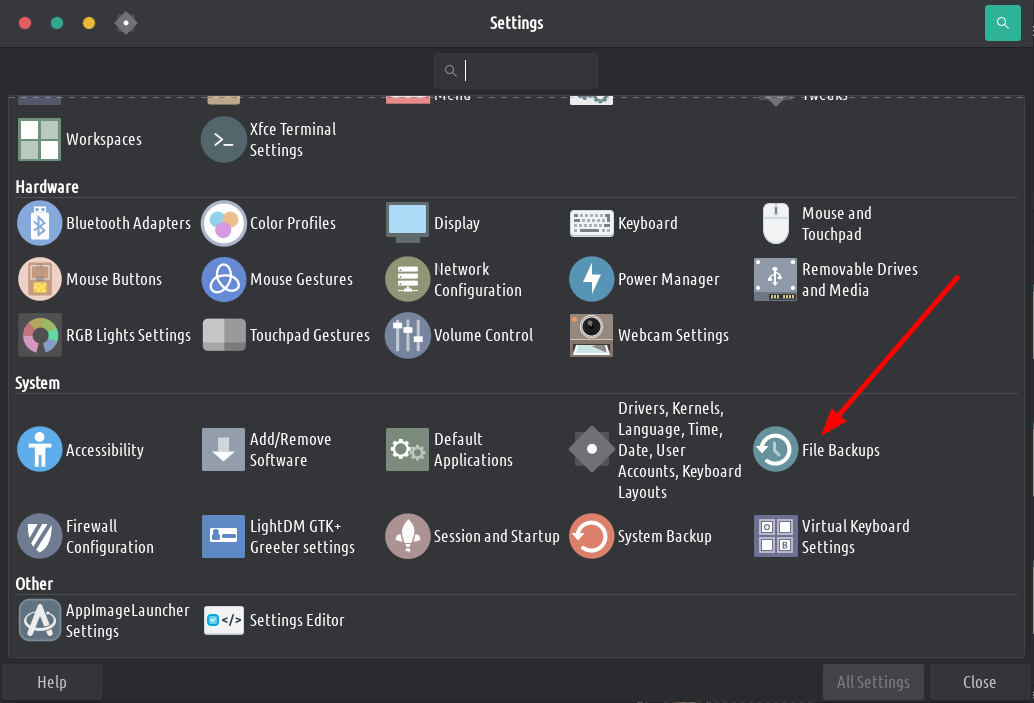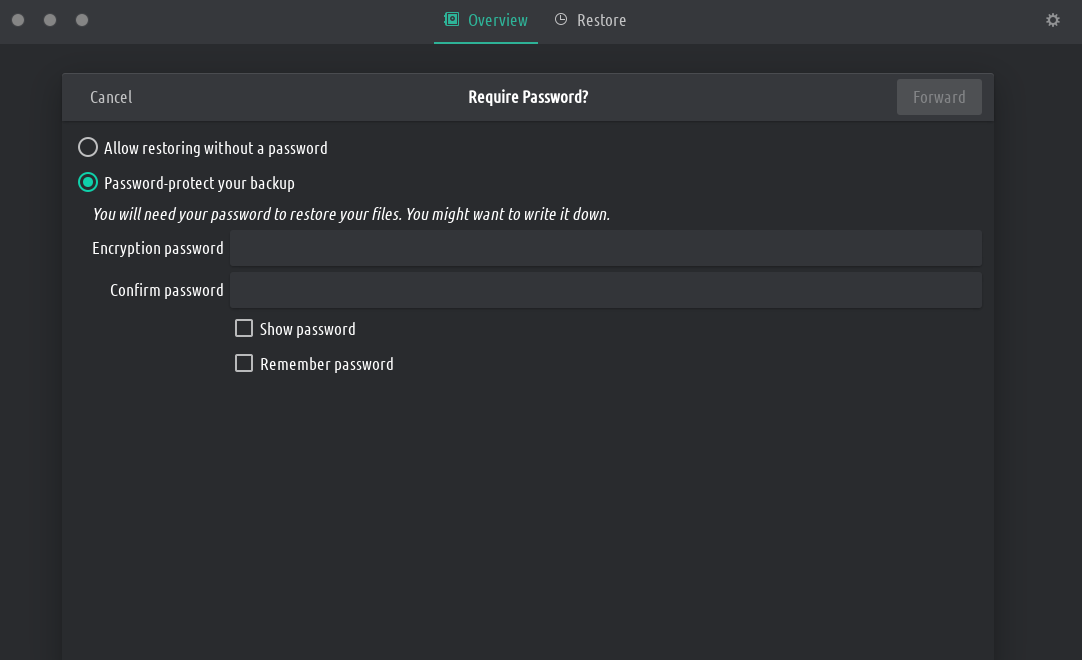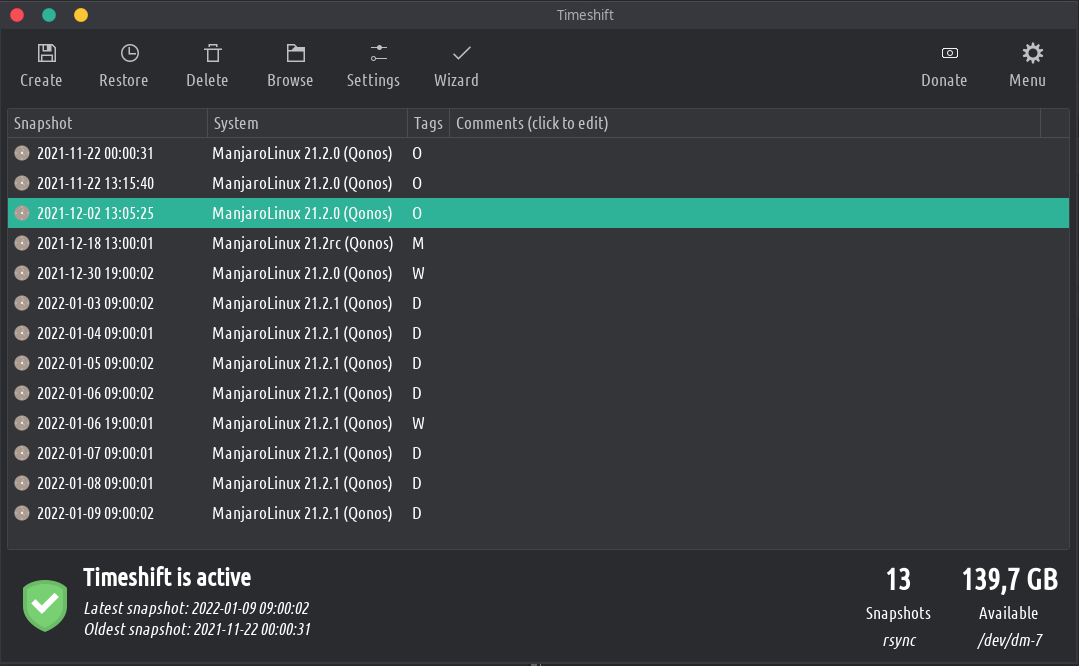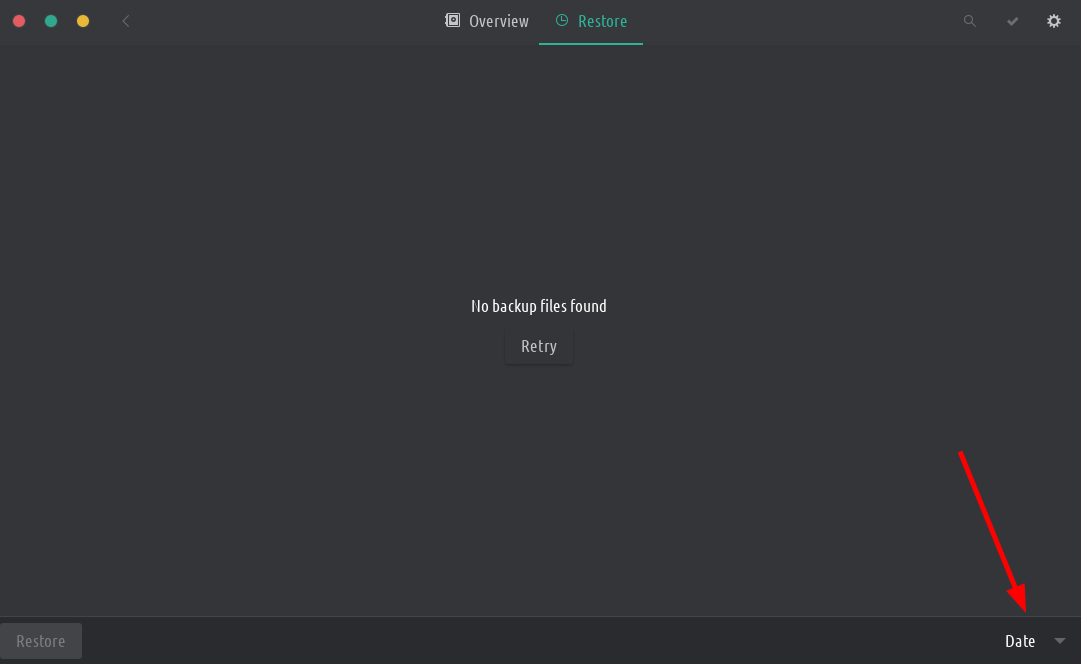TROMjaro creates an automated backup of your entire system every time there are important updates. In that regards you don’t have to bother much about this. Just use TROMjaro and enjoy it. But if you want more control over your system backups + you want to backup your files, read this tutorial.
The System: fast backups vs more-proper backups
Fast Backups: BTRFS.
If you don’t want to bother with system’s backups and let them be automated, simply use BTRFS for the disk format when installing TROMjaro. This option is easy to select from a drop down menu while following the TROMjaro installation steps.
Selecting BTRFS means that your backups will be seconds fast and on the same drive where the system is installed. The downside is that if your hard drive dies or gets wiped, then you lose them.
On top of the automated backups, you can schedule them at will. Open the System Backup Wizard and follow the steps. You can schedule how often to do the backups and how many copies to save:
Select to exclude all of your home files, and to include all of your root ones. This tells the app to only backup your system and not your files.
And you are done. With BTRFS + this, you have control over your system backups. And they are super fast, so that’s a plus.
More-proper backups: EXT4 with RSYNC.
But if you want to have full control over your system backups, select EXT4 for the disk partition when you install TROMjaro. Everything will work as explained above but there is 1 disadvantage + 1 advantage.
- Disadvantage: the backups will take several minutes.
- Advantage: the backups can be saved to any other hard drive.
Once you have EXT4 setup, you can open the same System Backup app and set it up as above. The only difference is that you can now select any other drive to store your backups. So in case your entire disk with the OS fails, you still have the system backups stored somewhere else.
So.
BTRFS = almost instant backups, but only able to save them on the same drive.
EXT4 with RSYNC = much slower backups, but they can be saved to any other drive.
With both of these you also get the automated system backups before any important system update, plus the fine control over when to make backups and how many to store.
You choose!
The great thing is that in TROMjaro your system auto-backups by default, regardless if you select EXT4 or BTRFS.
Files Backup
You files are located in the Home directory.
All of the settings for all of your apps, and all of your files, are there. To backup the entire Home folder, or specific ones, simply open the Files Backup app.
By default it is already setup to backup your Home folder and ignore some folders that do not make sense to backup:
Click the plus button to add more folders to any of those two lists - to backup or to ignore.
Then select a location where to store them:
And add a password to protect these backups if you wish (this means you encrypt them):
And done.
Restore the System
If you want to restore the system, but the system still works, then it is as easy as opening the System Backup app, select the backup you want to restore, and click restore:
If you cannot boot into your system again, then there are three ways to restore a backup.
-
Turn on your computer and keep on pressing SHIFT. You will see a TROMjaro menu. Select advance and then select to restore a Timeshift backup. Select whichever you want and press enter. This only works for BTRFS! And at times it may not work at all so it may not be as reliable but it is the easiest way to try and restore.
-
Boot into your OS and wait until the point when it gets stuck. Then press CTRL + ALT + F1 of F2 or F3 or any other F keys. See which one works. By works I mean a black screen should appear with some text, asking you to login. Type your username and press enter. Type your password and press enter - mind you, you won’t see anything when you type your password so just type and press enter. If that works then next type
timeshift --restoreand follow the steps to restore your backup. There shouldn’t be more than 2-3 steps, including one where you select the backup you want to restore. -
Burn the TROMjaro ISO on a USB stick. Boot from it the same way you did when you installed the OS. Once booted, open the same
System Backupapp. If you are asked for a password type the OS passwordTROMjaro. Select the drive where you backups are, then select the one you want to restore and click restore. Follow the steps (2-3). After it is done reboot your computer and make sure you remove the USB Stick so you won’t boot from it.
As you can see there are several ways to restore your system even when you can’t boot into it anymore.
Restore the Files
This one is super easy. Open the Files Backup and click restore.
Select the date, select the folders/files. Click restore. Done!
That’s all!
If you need any help with any of these, let us know.
